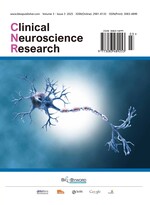A Real-World Study on the Efficacy and Safety of Citicoline Sodium Capsules for Neurological Outcomes in Acute and Recovery Phases of Ischemic Stroke
Abstract
Background: To evaluate the efficacy, safety, and adherence of oral citicoline sodium capsules in improving neurological outcomes during the recovery phase of ischemic stroke in a real-world setting. Methods: This single-arm, multicenter, real-world observational study enrolled 6496 ischemic stroke patients in the recovery phase from January 2020 through December 2024. Patients received citicoline sodium capsules (200 mg, three times daily) for three months. Outcomes were assessed using NIHSS, mRS, and Barthel Index at baseline, 1, 2, and 3 months. Treatment effectiveness was categorized based on NIHSS improvement as markedly effective (≥90% reduction), improved (60%–89%), effective (30%–59%), or ineffective (<30%). Results: Of the 6496 patients (mean age 61.9±10.6 years; 61.6% male), 85.8% had comorbidities. After three months of treatment, significant improvements were observed in all neurological function measures: NIHSS decreased from 11.6±5.5 to 9.6±6.2, mRS improved from 2.5±1.1 to 2.0±1.1, and BI increased from 51.4±24.0 to 62.8±25.7 (all P<0.001). The total effectiveness rate increased progressively from 9.9% at 1 month to 37.5% at 3 months, while the proportion of severely dependent patients decreased from 27.7% to 11.9%. Treatment adherence remained high (96%–97%) throughout the study period, with only two mild adverse events reported. Conclusions: This real-world study suggests that three-month citicoline therapy provides meaningful improvements in neurological function and daily living activities during stroke recovery, with excellent safety and adherence profiles. Further randomized controlled trials are warranted to confirm these findings and optimize treatment protocols.
References
GBD 2019 Diseases and Injuries Collaborator, 2020, Global Burden of 369 Diseases and Injuries in 204 Countries and Territories, 1990–2019: A Systematic Analysis for the Global Burden of Disease Study 2019. Lancet, 396(10258): 1204–1222.
GBD 2019 Stroke Collaborators, 2021, Global, Regional, and National Burden of Stroke and its Risk Factors, 1990–2019: A Systematic Analysis for the Global Burden of Disease Study 2019. Lancet Neurology, 20(10): 795–820.
National Health Commission of the People’s Republic of China, 2021, Chinese Guidelines for the Prevention and Treatment of Cerebrovascular Diseases (2021 Edition). People’s Medical Publishing House, Beijing.
Feigin VL, Brainin M, Norrving B, et al., 2022, World Stroke Organization (WSO): Global Stroke Fact Sheet 2022. International Journal of Stroke, 17(1): 18–29.
Soto-Rojas LO, Pacheco-Herrero M, Martínez-Gómez PA, et al., 2021, The Neurovascular Unit Dysfunction in Alzheimer’s Disease. International Journal of Molecular Sciences, 22(4): 2022.
Dong HH, Lv DW, 2022, Guidelines for Chronic Disease Management of Elderly Ischemic Stroke. Research in Integrated Traditional Chinese Medicine and Western Medicine, 14(6): 382–392.
Rudberg AS, Berge E, Laska AC, et al., 2021, Stroke Survivors’ Priorities for Research Related to Life after Stroke. Top Stroke Rehabilitation, 28(2): 153–158.
Teasell R, Salbach NM, Foley N, et al., 2020, Canadian Stroke Best Practice Recommendations: Rehabilitation, Recovery, and Community Participation Following Stroke. International Journal of Stroke, 15(7): 798–818.
Cabral DF, Fried P, Koch S, et al., 2022, Efficacy of Mechanisms of Neuroplasticity after a Stroke. Restorative Neurology and Neuroscience, 40(2): 73–84.
Mendelson SJ, Prabhakaran S, 2010, Diagnosis and Management of Transient Ischemic Attack and Acute Ischemic Stroke: A Review. JAMA, 325(11): 1088–1098.
Zhang Z, 2010, Citicoline: A Promising Neuroprotective and Neurorepair Agent. International Journal of Cerebrovascular Disease and Stroke, 2010(4): 241–245.
Secades JJ, Gareri P. 2022, Citicoline: Pharmacological and Clinical Review, 2022 Update. Revue Neurologique, 75(s05): S1–S89.
Agarwal A, Vishnu VY, Sharma J, et al., 2022, Citicoline in Acute Ischemic Stroke: A Randomized Controlled Trial. PLoS One, 17(5): e0269224.
Overgaard K, 2014, The Effects of Citicoline on Acute Ischemic Stroke: A Review. Journal of Stroke & Cerebrovascular Diseases, 23(7): 1764–1769.
Ahmed KMA, Chowdhury MTI, Sarkar MSR, et al., 2023, Safety and Efficacy of Citicoline among Acute Ischemic Stroke Bangladeshi Patients: A Randomized Control Trial. Journal of National Institute of Neurosciences Bangladesh, 9(1): 3–10.
Secades JJ, Alvarez-Sabín J, Rubio I, et al., 2010, Citicoline: Pharmacological and Clinical Review, 2010 Update. Revue Neurologique, 52(Suppl 2): S1–S62.
Secades JJ, Alvarez-Sabin J, Castillo J, et al., 2016, Citicoline for Acute Ischemic Stroke: A Systematic Review and Formal Meta-analysis of Randomized, Double-blind, and Placebo-controlled Trials. Journal of Stroke & Cerebrovascular Diseases. 25(8): 1984–1996.
Jaksa A, Wu J, Jónsson P, et al., 2021, Organized Structure of Real-world Evidence Best Practices: Moving from Fragmented Recommendations to Comprehensive Guidance. Journal of Comparative Effectiveness Research, 10(9): 711–731.
Wang C, 2022, The Role of Neuromodulation to Drive Neural Plasticity in Stroke Recovery: A Narrative Review. Brain Network and Modulation, 1(1): 2–8.
Premi E, Cantoni V, Benussi A, et al., 2022, Citicoline Treatment in Acute Ischemic Stroke: A Randomized, Single-blind TMS Study. Frontiers in Neurology, 2022(13): 915362.
Powers WJ, Rabinstein AA, Ackerson T, et al., 2019, 2019 Update to the 2018 Guidelines for the Early Management of Acute Ischemic Stroke. Stroke, 50(12): e344–e418.
He Q, Wang W, Zhang Y, et al., 2024, Global, Regional, and National Burden of Stroke, 1990–2021: A Systematic Analysis for Global Burden of Disease 2021. Stroke, 55(12): 2815–2824.
Zhang J, Gong Y, Zhao Y, et al., 2021, Post-stroke Medication Adherence and Persistence Rates: A Meta-analysis of Observational Studies. Journal of Neurology, 2021(268): 2090–2098.
Álvarez-Sabín J, Román GC, 2013, The Role of Citicoline in Neuroprotection and Neurorepair in Ischemic Stroke. Brain Sciences, 3(3): 1395–1414.
Wu S, Wu BO, Liu M, et al., 2019, Stroke in China: Advances and Challenges in Epidemiology, Prevention, and Management. Lancet Neurology, 18(4): 394–405.
Lyden PD, 2021, Cerebroprotection for Acute Ischemic Stroke: Looking Ahead. Stroke, 52(9): 3033–3044.
Verschure PFMJ, Dos Santos FP, Sharma V, 2023, Redefining Stroke Rehabilitation: Mobilizing the Embodied Goal-oriented Brain. Current Opinion in Neurobiology, 2023(83): 102807.
Gao Z, Pang Z, Chen Y, et al., 2022, Restoring after Central Nervous System Injuries: Neural Mechanisms and Translational Applications of Motor Recovery. Neuroscience Bulletin, 38(12): 1569–1587.
Casado A, Secades JJ, Ibarz R, et al., 2008, Cost-effectiveness of Citicoline Versus Conventional Treatment in Acute Ischemic Stroke. Expert Review of Pharmacoeconomics & Outcomes Research, 8(2): 151–157.

